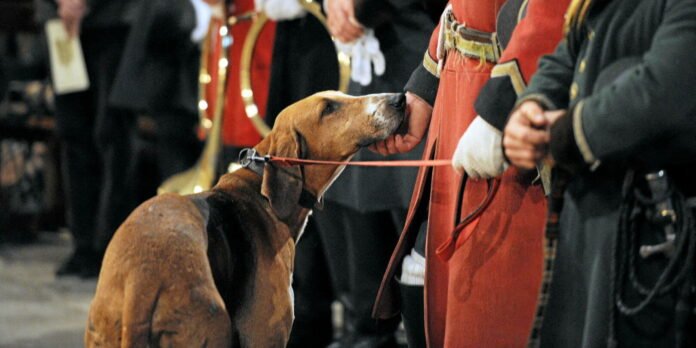Ihe is the ideal companion in the home, friend of the children, companion in life and in play, loyal guardian, faithful among the faithful… But where does he come from? And why has it so easily penetrated our habitats? A surprising and instructive book, Animals in history (Tallandier), looks back on his incredible saga in the various civilizations that in turn used him, raised him and even deified him…
It all started around 30,000 BC, with the separation of wolves and dogs and the emergence of subspecies, followed by gradual domestication around 12,000 BC, probably in Eurasia. In this period, recalls the historian Robert Delort, man was not yet a sedentary breeder, but a hunter who had to survive and who found in this animal an ideal hunting companion.
The wild animal is used to hunting in packs, it will gradually identify the man as the chief of the clan. How ? We are reduced to hypotheses: probably by breeding cubs that will bond with whoever feeds and raises them, then by crossbreeding with bitches and other subspecies…
Symbol of evil and diseases vector
With the sedentarization of the tribes, the dog takes on all its importance: hunting is added to guarding the camp, the herd, but also war and the line – it can be used to pull small loads. The dog is also part of the family’s diet, a slaughter animal that e.g. consumed in Neolithic, Pre-Columbian and Chinese civilizations. The fur is used to make hats, the skin ends up in gloves, the hair in mattresses and the bones and tendons are used to make glue…
It was the time when cross-breeding and the first breeds were born, traces of which can still be found in ancient civilizations, such as the Babylonian mastiff, trained for hunting and war, which probably comes from India or Tibet, explains Robert Delort .
ALSO READAnimal welfare: should flat-nosed dogs be banned? And especially Egypt, with greyhounds, bassets and shepherds, found in the form of mummies. On the banks of the Nile, dogs are even deified, following the example of the god Seth, protector of Upper Egypt, represented in the image of a greyhound. Without forgetting the cult of the dog-jackal Anubis, the god of the dead, who will be honored even in Rome…
But the dog has not always had a good image, especially in Judeo-Christian civilization. In the Bible, the author recalls, he is an unclean, despicable, violent animal, eats garbage, eats corpses… And the West has long designated him as a symbol of evil and a carrier of infection – during rabies epidemics, stray dogs are regularly shot and massacred during great hunts.
The art of dressage
Their fame eventually forced itself thanks to the elite who used it for war and hunting, such as the Vikings or the Franks, some warriors were buried with their best beasts. Training then becomes a real art, entrusted to specialists, without forgetting a targeted diet, with especially red meat for game dogs. “Gaston Fébus advised in XIVe century, two meals a day, a custom still in use for the dogs of Louis XV, who received 2.50 pounds of bread a day (more than 3,000 calories)”, specifies historian Robert Delort.
ALSO READDogs, valuable allies for mental healthHunting, war and prestige also impose selection, which sometimes depends on the chances of history. The Germanic invasions of Ve century brought a new type of sleek greyhound, Saint Louis brought back the Tartar griffin from the Crusades, Saint-Hubert appeared in the 11the century, in the monastery of the Ardennes, which bears his name. “It would have gone to England with William the Conqueror (1066) and the cross with the Arabian sighthound would have given the spaniel”, explains Robert Delort.
cat competition
Braques are reserved for tracking, barkers and hunting dogs for tracking, mastiffs for big game and basset hounds for sniffing in caves… But it will be necessary to wait until the 19th century.e century to suddenly see the breeds proliferate, especially thanks to the first dog shows in England and France – almost 200 different species already listed before 1900.
ALSO READIn Versailles, animals led the life of a castleIt must be said that the dog now stands out as a pet that is valued by households. The phenomenon is not new, as the author points out. “In antiquity, the Maltese dog played the role of the Bichon, which came after it, but if the Pekingese, which arrived in Europe after the sacking of the Summer Palace (1860), perhaps dates from the 6e century of our era, Western pet breeds only began to differentiate in earnest in the late Middle Ages, when men retreated from natural selection, often small and unfit to survive in an environment other than the artificial environment of the human civilization.
They then come into competition with cats, who begin to invite themselves into the intimacy of the home, following the example of Louis XV, a great lover of hunting, but who also pampered a magnificent black Persian at Versailles. The rivalry between these pets was just beginning…
Animals in historyby Éric Baratay, Tallandier Editions, June 2023, 288 pages, €21.50.
